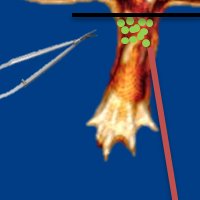Regeneration
TISSUE REGENERATION
Humans possess very limited tissue regenerative potential and rely heavily on fibrosis and scar formation following injury. This trait is shared with mammals used in biomedical research (mouse, rat, rabbit, pig, etc.) and makes progress in regenerative medicine and stem cell science inevitable difficult applying these organisms. However, vertebrate species do exist with an unsurpassed ability to recapitulate embryonic development and regenerate tissue and even organs and whole appendages to perfection without any scar formation.
These capacities are in particular associated with the amphibians (salamanders and frogs) being able to perfectly regenerate cardiac tissue, intestines, liver, skeletal muscle, central and peripheral nervous system, lens, retina, jaw, and even whole appendages such as limbs and tail. Since the molecular mechanisms of amphibian regeneration are conserved to a very high degree in mammalian embryonic development, better understanding of the amphibian regeneration may provide important knowledge for future regenerative therapies in humans.


